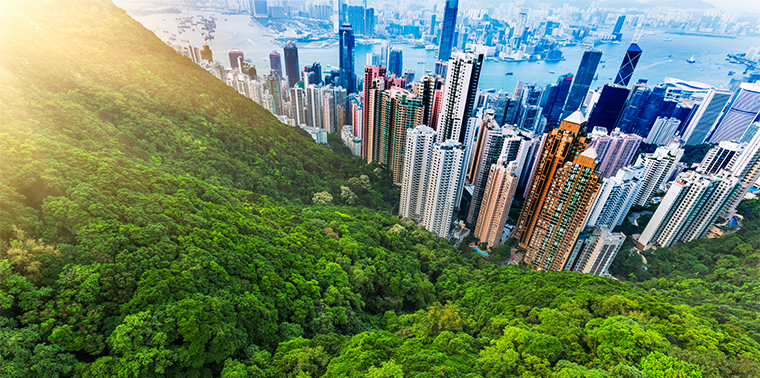August 10, 2016 — When it comes to climate change, a city’s significance stretches past its skyline.
Cities, of course, are a source of abundant greenhouse gas emissions from electricity, transportation, construction and more. But that look alone is too narrow, according to Can a City Be Sustainable?, the 2016 installment of the Worldwatch Institute’s State of the World series. In the report Tom Prugh, senior researcher at Worldwatch, contends that a full account of urban greenhouse gas emissions is incomplete without considering two uniquely urban burdens borne beyond municipal boundaries: changes in land use as cities expand and changes in people’s diets as cities grow.
Both of those trends spur deforestation, which releases greenhouse gases. Forest loss in the tropics is responsible for about 10 percent of greenhouse gas emissions each year, equivalent to annual emissions from 600 million cars. Many of those emissions are, in effect, exports from the world’s cities.
Urban expansion is one cause. As people move in, cities spread out, often into natural areas such as forests. To combat this, the report says, municipalities can try to limit sprawl and promote higher density development (a strategy that comes, however, with its own issues).
A thornier threat is dietary change. Moving to a city often means higher wages for workers, who then tend to buy and eat more meat. Growing crops to feed livestock is less efficient than growing crops to feed people, since animals only pass on a fraction of the energy they consume to the humans who consume them. Because farmers get fewer calories per acre when producing meat, richer diets demand more farmland.
“Even in relatively highly productive European agriculture, it takes an estimated 0.3 square meters [0.4 square yards] to produce an edible kilogram of vegetables,” Prugh writes in the report, “but 1.2 square meters [1.4 square yards] for a kilogram of milk, 3.5 [4.1] for eggs, 7.3 [8.7] for chicken, 8.9 [10.6] for pork, 10.2 [12.2] for cheese, and 20.9 [24.9] for beef.” Clearing land to produce that food often comes at the cost of more deforestation.
Potential solutions to the diet dilemma mentioned in the report include cutting food waste and discouraging excessive meat consumption. Shifting meat production from cows and other ruminants to pigs and poultry, which require less land for the final product, might also help put a damper on city-driven deforestation, in turn shrinking urban areas’ less obvious impacts on Earth’s climate. ![]()
Ensia shares solutions-focused stories free of charge through our online magazine and partner media. That means audiences around the world have ready access to stories that can — and do — help them shape a better future. If you value our work, please show your support today.
Yes, I'll support Ensia!
